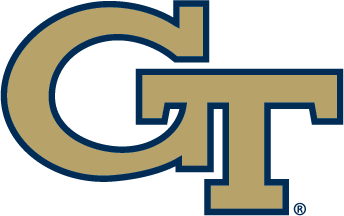Oct. 23, 2013
By Jon Cooper
Sting Daily
The U.S. Navy is second-to-none in the world when it comes to winning battles on the water.
Who better, then, to help Georgia Tech Swimming and Diving win its aquatic battles?
(Their next one is Friday, when The Yellow Jackets travel to Tallahassee to take on ACC rivals Florida State and NC State)
That was the thinking of Head Coach Courtney Shealy Hart and her staff. The idea, getting in the kind of shape that the SEALs do, came as most good ideas do — as far away from the season and the pool as one could get, at their annual summer retreat.
“It was kind of a brainchild out of our Summer Coaches retreat,” Hart recalled. “Bill Koppleman, Yun [Qu], Eric [Stefanski], John [Ames] and I met. We said, ‘Let’s work on our fitness level and let’s work on creating a total athlete.’ Eric had seen it in his previous program.
“We’ve put a new emphasis on fitness, kind of being a total athlete,” she added. “There are a couple of Navy SEAL Challenges, one is the USA Swimming/Navy SEAL Swimming Challenge and the other one is the Navy SEAL Dry Land Challenge, which includes sit-ups, pull-ups, dips and push-ups.”
The program Tech implemented tested the team every other week over an eight-week period. Everyone would swim 500 meters then do two minutes of push-ups, pull-ups and sit-ups. That would be followed by a mile-and-a-half run. You add up the times from the swim and the run then subtract the number of calisthenics.
As might be expected with something new, there was an adjustment period. But the team embraced the system.
“It was completely new so just trying to get used to a new style of training was big,” said junior butterfly/freestyle sprinter Andrew Chetcuti. “I definitely didn’t respond to it straight away. My first swims of the season were awful just because I was exhausted from what we were doing. But I’m already faster right now than I was this time last year by a lot from what we’re doing. So it’s definitely starting to transition to the pool, which I like a lot.”
“I guess basically we’ve been doing a lot of strength and I don’t think we’re used to doing that, especially pull-ups,” agreed sophomore freestyle sprinter Erika Staskevicius. “In everything we’ve been doing we’ve really been stepping it up this season. It’s been a hard adjustment because that makes you a lot more tired in the water but it’s really great because it pushes you and it’s going to help us in the long run. I think our team as a whole is a lot stronger than it was before.”
The coaches posted the scores after every test and, as would be expected with any group of competitors, both the men and women used the scores as incentive to improve.
“I got to 20 pull-ups and that was my goal,” said Staskevicius. “I think I started at 13, so I wanted to get up there. By the end that was my goal and I was happy about that.”
“I asked Eric what a good score was. He said, ‘Sub-400 is really good for a guy.’ So I wanted to break 400,’” said Chetcuti. “Eventually I went 320. I was really happy to do that. I was really proud of that.”
In addition to the physical improvement, there is also a noticeable improvement in the morale on this year’s team.
“It’s really fun because you’re competing against each other but at the same time, you want your teammates to do well because you want your team to do well,” said Staskevicius. “I think it’s one of those things where by pushing each other it really helps the team.”
“One of the last times we split the team into White and Gold to go against each other and my partner was a guy on the Gold team,” said Chetcuti. “I was on the White team but we were still cheering each other on to try and get as high as possible. Then he would go before me and I’d see what he did and I’d be, ‘Okay, that’s what I have to beat.’ It just makes us way more supportive of each other, which I really like.
“We’ve become much closer,” he added. “I thought last year we were much more separate as a team. Now it’s just one team. We all know what everyone’s doing and we’re all supporting each other. It’s much better.”
The SEAL program appears to be here to stay and, as tough as the workouts and even the recovery were, preseason training would not be the same without it.
“I think the benefit comes from having the overall fitness level and overall athlete. Not necessarily always having to be in the pool all of the time,” said Hart. “They challenge each other and they get behind each other, which is great to see. So I think it’s helping them. It’s not easy so it’s pushing through something that’s difficult as a team. That’s good to see from a staff perspective.”
The athletes agree.
“It’s competitive and fun but it’s just so tiring,” said Chetcuti. “I think I would miss it. For an early-season thing I wouldn’t really enjoy doing it next spring.”
“We’re done with it for now. They’re getting into the racing part of our season,” said Staskevicius. “But I think we’ll bring it back in the spring and that’s good.”
Get Sting Daily in your e-mail box — it’s free! Just register hereto get the latest features on Georgia Tech Athletics.
Also, make sure to follow Georgia Tech Athletics on Facebook and Twitter.









